The AMD Ryzen AI 9 HX 370 Review: Unleashing Zen 5 and RDNA 3.5 Into Notebooks
by Gavin Bonshor on July 28, 2024 9:00 AM EST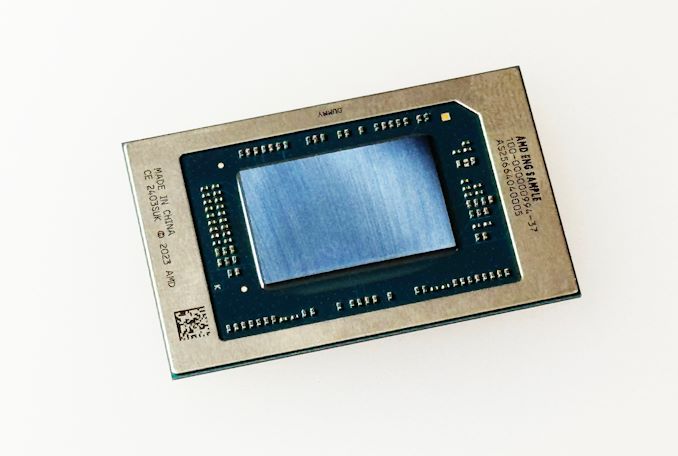
During the opening keynote delivered by AMD CEO Dr. Lisa Su at Computex 2024, AMD finally lifted the lid on their highly-anticipated Zen 5 microarchitecture. The backbone for the next couple of years of everything CPU at AMD, the company unveiled their plans to bring Zen 5 in the consumer market, announcing both their next-generation mobile and desktop products at the same time. With a tight schedule that will see both platforms launch within weeks of each other, today AMD is taking their first step with the launch of the Ryzen AI 300 series – codenamed Strix Point – their new Zen 5-powered mobile SoC.
The latest and greatest from AMD, the Strix Point brings significant architectural improvements across AMD's entire IP portfolio. Headlining the chip, of course, is the company's new Zen 5 CPU microarchitecture, which is taking multiple steps to improve on CPU performance without the benefits of big clockspeed gains. And reflecting the industry's current heavy emphasis on AI performance, Strix Point also includes the latest XDNA 2-based NPU, which boasts up to 50 TOPS of performance. Other improvements include an upgraded integrated graphics processor, with AMD moving to the RDNA 3.5 graphics architecture.
The architectural updates in Strix Point are also seeing AMD opt for a heterogenous CPU design from the very start, incorporating both performance and efficiency cores as a means of offering better overall performance in power-constrained devices. AMD first introduced their compact Zen cores in the middle of the Zen 4 generation, and while they made it into products such as AMD's small-die Phoenix 2 platform, this is the first time AMD's flagship mobile silicon has included them as well. And while this change is going to be transparent from a user perspective, under the hood it represents an important improvement in CPU design. As a result, all Ryzen AI 300 chips are going to include a mix of not only AMD's (mostly) full-fat Zen 5 CPU cores, but also their compact Zen 5c cores, boosting the chips' total CPU core counts and performance in multi-threaded situations.
For today's launch, the AMD Ryzen AI 300 series will consist of just three SKUs: the flagship Ryzen AI 9 HX 375, with 12 CPU cores, as well as the Ryzen AI 9 HX 370 and Ryzen 9 365, with 12 and 10 cores respectively. All three SoCs combine both the regular Zen 5 core with the more compact Zen 5c cores to make up the CPU cluster, and are paired with a powerful Raden 890M/880M GPU, and a XDNA 2-based NPU.
As the successor to the Zen 4-based Phoenix/Hawk Point, the AMD Ryzen AI 300 series is targeting a diverse and active notebook market that has become the largest segment of the PC industry overall. And it is telling that, for the first time in the Zen era, AMD is launching their mobile chips first – if only by days – rather than their typical desktop-first launch. It's both a reflection on how the PC industry has changed over the years, and how AMD has continued to iterate and improve upon its mobile chips; this is as close to mobile-first as the company has ever been.
Getting down to business, for our review of the Ryzen AI 300 series, we are taking a look at ASUS's Zenbook S 16 (2024), a 16-inch laptop that's equipped with AMD's Ryzen AI 9 HX 370. The sightly more modest Ryzen features four Zen 5 CPU cores and 8 Zen 5c CPU cores, as well as AMD's latest RDNA 3.5 Radeon 890M integrated graphics. Overall, the HX 370 has a configurable TDP of between 15 and 54 W, depending on the desired notebook configuration.
Fleshing out the rest of the Zenbook S 16, ASUS has equipped the laptop with a bevy of features and technologies fitting for a flagship Ryzen notebook. The centerpiece of the laptop is a Lumina OLED 16-inch display, with a resolution of up to 2880 x 1800 and a variable 120 Hz refresh rate. Meanwhile, inside the Zenbook S 16 is 32 GB of LPDDR5 memory and a 1 TB PCIe 4.0 NVMe SSD. And while this is a 16-inch class notebook, ASUS has still designed it with an emphasis on portability, leading to the Zenbook S 16 coming in at 1.1 cm thick, and weighting 1.5 kg. That petite design also means ASUS has configured the Ryzen AI 9 HX 370 chip inside rather conservatively: out of the box, the chip runs at a TDP of just 17 Watts.
AMD's Strix Point SoC Architecture: A Quick Recap
Before we dive into our review of the ASUS Zenbook 16 S and AMD's Ryzen 9 AI HX 370 mobile processor, we will quickly recap what's new with the Strix Point SoC and AMD's various processor architectures. Below is a list of our comprehensive and detailed commentary on Zen 5 and the rest of AMD's 2024-2025 mobile platform:
- AMD Announces The Ryzen AI 300 Series For Mobile: Zen 5 With RDNA 3.5, and XDNA2 NPU With 50 TOPS
- The AMD Zen 5 Microarchitecture: Powering Ryzen AI 300 Series For Mobile and Ryzen 9000 for Desktop
Compared to the other PC SoC launches in the past several months, AMD has had a pretty short run-up to today's launch of Strix Point. While Zen 5 has been on AMD's long-term roadmap for years, the company only announced Strix Point and the associated Zen 5 CPU architecture in June, barely two months ago. So this launch has offered a refreshingly short waiting period before we got to see first-hand just what AMD's latest platform can offer.
At the heart of the AMD Ryzen AI 300 series of SoCs (and Ryzen 9000, too) is AMD's latest Zen 5 microarchitecture, which builds upon the success of Zen 4. Zen 5 brings a whole host of improvements to the underlying design compared to its predecessor. The latest chips also come with some minor manufacturing improvements as well, with AMD utilizing TSMC's N4P (4 nm) node to fabricate the Strix Point monodie.
With a mix of full-fat Zen 5 and compact Zen 5c CPU cores, Strix Point has two core complexes (CCXs), one featuring the four Zen 5 cores and the other housing the eight smaller Zen 5c cores. According to AMD, the more compact Zen 5c cores are around 25% smaller than the regular Zen 5 cores, with varying levels of L3 cache.
The AMD Zen 5 microarchitecture is designed to offer higher IPC performance than Zen 4, with AMD claiming an average uplift of 16% over its predecessor for AMD's highest-performance, full-fat Zen 5 core implementation. Zen 5 has been built with performance in mind but still maintains a strong focus on power efficiency, with is critical both in the mobile space and in AMD's lucrative server markets. The Zen 5c cores are specifically geared to offer (nearly) the same instructions per clock (IPC) rate as the full-fat cores, but with a smaller overall footprint on the die.
Still, digging into the fine print you'll find that the Zen 5 cores in Strix Point aren't quite the whole enchilada from a performance perspective. AMD's mobile chips are getting a third core type that is largely identical to the desktop core, but eschews the 512-bit (FP512) SIMD used for highly parallel operations. In lieu of that, both the big (Zen 5) and little (Zen 5c) cores on Strix point get a 256-bit (FP256) SIMD. So there are some small but meaningful differences between the desktop and mobile chips.
AMD's Strix Point has also been given an improved integrated graphics system, with Ryzen AI 300 using the latest RDNA 3.5 architecture. This newest iteration of AMD's venerable RDNA graphics architecture is a relatively minor revision overall versus the RDNA 3 graphics used in Phoenix, lacking any new features, but implementing further optimizations to improve energy efficiency, a critical element for the mobile market.
The net result is that there has been a lot of work going on behind the scenes to optimize the plumbing of the core architecture. Improving memory management is not especially sexy from a feature point of view, for example, but going to memory is an incredibly expensive action in terms of power consumption. So these kinds of optimizations can pay off significantly in GPU and mixed CPU/GPU workloads. Given that laptops are power-constrained environments, those power savings can then be invested in improving overall performance, such as by allowing for higher sustained clockspeeds.
RDNA 3.5 is a bit unique in this respect, as it's the first time an AMD SoC has received an architecturally distinct GPU of its own, rather than just a down-ported version of AMD's discrete GPU architecture. Ultimately, AMD's improvements here will feed back into future architectures, so this isn't any kind of permanent bifurcation, but it's another example of how AMD is dedicating time and resources to better optimize their mobile hardware.
The Ryzen AI 300 Family
Although we are focusing on the AMD Ryzen AI 9 HX 370 in this review, AMD has another two Ryzen AI 300 series (Strix Point) processors. All three Ryzen AI 300 series SoCs amalgamate Zen 5 and Zen 5c cores onto the same die, while two of the chips are branded under AMD's high-performance HX series.
| AMD Ryzen AI 300 Series Mobile Processors (Zen 5/Strix Point) |
|||||||
| AnandTech | Cores | Base Freq |
Turbo Frequency |
L3 Cache |
Graphics | NPU | TDP |
| Ryzen AI 9 HX 375 | 4 x Zen 5 8 x Zen 5c (24 Threads) |
2.0GHz | Zen5: 5.1GHz Zen 5c: 3.3GHz |
24 MB | Radeon 890M 16 CU |
XDNA 2 (55 TOPS) |
15-54W |
| Ryzen AI 9 HX 370 | 4x Zen 5 8x Zen5c (24 Threads) |
2.0GHz | Zen5: 5.1GHz Zen 5c: 3.3GHz |
24 MB | Radeon 890M 16 CU |
XDNA 2 (50 TOPS) |
15-54W |
| Ryzen AI 9 365 | 4x Zen 5 6x Zen5c (20 Threads) |
2.0GHz | Zen 5: 5.0GHz Zen 5c: 3.3 GHz |
24 MB | Radeon 880M 12 CU |
XDNA 2 (50 TOPS) |
15-54W |
What's notable right off the bat here is that AMD has condensed their chip stack significantly versus the Ryzen Mobile 7000/8000 generations. Whereas AMD previously had separate chip lines for the 15-30 Watt (U-series) and 35-54 Watt (HS-series), the Ryzen AI 300 series compresses this down to a single line of chips that can be configured to run anywhere between 15 Watts and 54 Watts – AMD's complete TDP range for mainstream chips. Consequently, the chips can conceivably be placed in anything from a ultrabook up to a desktop replacement laptop. Meanwhile, the default TDP for all of these chips is 28 Watts, which has been an increasingly popular power point for thin & light laptops.
And since we last talked about the AMD Ryzen AI 300 series when we detailed the Zen 5 microarchitecture earlier in the month, AMD has snuck in a third SKU to the Ryzen AI 300 series: the Ryzen AI 9 HX 375. Almost, but not quite identical to the previously-announced Ryzen AI 9 HX 370 SKU, the HX 375 ships with a slightly faster NPU. At 55 TOPS, this NPU is 10% faster than the NPU found in the HX 370 (50 TOPS), and this marks the first time that we've seen any PC vendor (Qualcomm included) offer SKUs with different NPU configurations. It's a small distinction to be sure, but it's also a sign that NPUs are getting powerful enough that there's room for some variation, rather than chip vendors having to ship the fastest configuration they can offer.
NPU matters aside, both the HX 375 and HX 370 feature a 12 CPU core configuration, with 4x Zen 5 and 8x Zen 5c cores. Both core types are capable of SMT, meaning that these chips can have up to 24 CPU threads in flight at once (ed: anyone remember when just 2 threads was a big deal?). And with their wide TDP ranges, they have an equally large clockspeed range, with a base frequency of 2.0GHz and a turbo frequency of up to 5.1 GHz. Both chips are also paired with Strix Point's full integrated graphics configuration, the Radeon 890M with 16 graphics CUs.
The third and final SoC in the stack is the Ryzen AI 9 365, which is a 10 core part and consists of 4x& Zen 5 cores and 6x Zen 5c cores. The Ryzen AI 9 365 can boost up to 5.0 GHz, and gets a slightly cut-down Radeon 880M integrated GPU, which runs with 12 CUs.
Otherwise, all three Ryzen AI 300 chips offer the same cache configuration: 24 MB of L3 cache, which is split as 16 MB on the Zen 5 CCX, and 8 MB on the Zen 5c CCX.
The ASUS Zenbook S 16 (2024) Notebook: A Closer Look
One of the first notebooks announced that would feature AMD's Ryzen AI 300 series was the ASUS Zenbook S 16 (2024), which is a premium ultrathin 16-inch notebook with an impressive feature set. The ASUS Zenbook S 16 (UM5606WA) we received features a striking 'Scandinavian white' colored chassis, which uses ASUS's own material for the build, which they are calling 'Ceraluminum.' ASUS explains it is a high-tech ceramic designed to be robust and light, with the Ceraluminum being an amalgamation of ceramic and aluminum.
The ASUS Zenbook S 16 (UM5606WA) has a 16-inch ASUS Lumina OLED display with a 2880 x 1800 16:10 resolution, a 120 Hz refresh rate, and a maximum brightness of 400 nits, or an HDR peak brightness of 500 nits. Other key specs on the 16-inch Lumina OLED touchscreen display include a 100% DCI-P3 color gamut with HDR True Black 500 certification, and it also comes PANTONE validated for users who want that. ASUS also includes an ASUS Pen 2.0 stylus in the packaging, so users can use the touchscreen without getting it all grubby or covered in fingerprints.
ASUS has done plenty with the keyboard on the Zenbook S 16, which has a 19.5 mm pitch between keys, which means there's 19.5 mm between the center of the key being pressed and the next key to it. ASUS has also opted for an array of commonly used function keys and the Microsoft Copilot+ key, which, when pressed, brings up the Microsoft Copilot+ AI assistant. The keyboard itself features backlighting, which has varying levels of white LEDs behind it; in my opinion, RGB wouldn't suit an elegant chassis such as this. There are also 0.1 mm dish-shaped indentations on each key, while the keys themselves travel 1.1 mm upon a full keypress.
Some of the key hardware inside the ASUS Zenbook S 16 (UM5606WA) in this review includes 32 GB of LPDDR5X-7500 memory in a 2 x 16 GB dual channel configuration. It also has a single 1 TB PCIe 4.0 x4 NVMe SSD, although ASUS says it does support up to 2 TB PCIe 4.0 x4 M.2 SSDs. On the ASUS website, users can select between two different variations. This includes the option to opt for the slightly lower spec Ryzen AI 9 365 processor, which is a 10C/20T chip and comes with AMD's Radeon 880M integrated graphics. Users can also select between 24 GB or 32 GB of LPDDR5X-7500 memory, while users can opt for two different colors; this includes Zumaia Gray or Scandinavian White. Despite the color, it comes with ASUS's Ceraluminum chassis, which is designed to be lightweight and durable on the go.
| AMD Ryzen AI 9 HX 370 Review Platform (Strix Point, Zen 5 + Zen 5c) |
||||||
| ASUS Zenbook S 16 (UM5606WA) As Reviewed |
||||||
| Processor | AMD Ryzen AI 9 HX 370 4xZ5 + 8xZ5c / 24 T 2.0 GHz Base 5.1 GHz Turbo 28 W Base TDP |
|||||
| Memory | 32 GB LPDDR5X - 2x16 | |||||
| GPU | AMD Radeon 890M 16 x RDNA 3.5 Graphics Cores 2.9 GHz Boost |
|||||
| Display | 16" 2880 x 1800 16:10 ASUS Lumina OLED Panel 120 Hz Refresh 0.2 ms Response Up to 400 nits/500nits with HDR 100% DCI-P3 Gamut |
|||||
| Storage | 1 TB PCIe 4.0 NVMe | |||||
| Networking | Wi-Fi 7 Bluetooth 5.4 |
|||||
| Audio | 6 x Speakers Built-in Array Microphone 3.5 mm Audio Jack |
|||||
| Battery | 78 Wh 65 W Watt AC Type-C Adapter |
|||||
| I/O | 2 x USB4 G3 Type-C (Display/PD) 1 x USB 3.2 G2 Type-A 1 x HDMI 2.1 output (TMDS) 1 x 3.5mm Combo Audio Jack SD 4.0 Card Reader |
|||||
| Dimensions | 9.57 x 0.47 x 0.51 inches (353.6 x 240.3 x 12.9 mm) |
|||||
| Weight | 1.50 kg / 3.31 lb | |||||
| Camera | 1080p /w Windows Hello IR | |||||
| Color | Scandinavian White | |||||
| Pricing | $1699 (As configured) | |||||
Along the top bezel in the middle is a full HD (1080p) webcam, which supports Windows Hello (IR), but it also doubles up as an AiSense Camera, which uses AI with Windows Studio Effects and optimizes the scene for more professional-looking video calls. Much of the included software package revolves around encompassing AI, and harnessing what AI on the PC can do.
Touching more on how the Zenbook S 16 feels, it weighs 1.5 kg, or 3.31 lbs, which isn't the lightest ultrathin notebook on the market, but it does look and feel good. Being an ultraportable, it has a very reasonable footprint for a 16-inch notebook, with dimensions of 353.6 x 243.0 x 11.9 mm or 13.92 x 9.57 x 0.47 inches, which makes the Zenbook S 16 a rather sleek notebook. One area to note is the bezels. Surrounding the 16-inch Lumina OLED panel are very thin black bezels, with the top bezel measuring just 0.6 mm and just 0.4mm at the sides, making it appear smaller.
When it comes to I/O, ASUS includes a myriad of options, including two USB 4.0 Gen 3 Type-C ports, both of which support display and power delivery, and a single USB 3.2 G2 Type-A port. There is a single HDMI 2.1 TMDS video output for users looking to connect to a screen, while six Harman Kardon front-facing speakers are designed for immersive sound; there is also a 3.5 combo audio if users wish to go for headphones instead.
As we typically see from premium ASUS notebooks and laptops, they include a comprehensive set of software, with the MyASUS app acting as a sort of central hub for many of the features. This includes selecting between the different fan profiles, including whisper mode, which lowers the power down so the fans can relax, thus creating a quieter environment. Other profiles include the Performance mode, which will ramp the fans up when load is put on the CPU and become quite noisy; it's a trade-off between faster performance and more noise.
Users can also customize the sound profile depending on whether they're watching a movie, listening to music, playing a game, and so forth; this changes the type of audio from the six Harman Kardon speakers, which sound great, especially for notebook speakers. Another piece of software that ASUS includes is StoryCube, which is essentially an AI-driven media hub that uses AI to categorize and sort images across the notebook.
The ASUS Zenbook S 16 UM5606 feels like and looks every bit as premium as any premium notebook comes, with many AI-integrated software features and applications included for users to sink their teeth into. This is not just limited to ASUS's own software but to Microsoft's Copilot+, which, seemingly in software terms, is the star of the show when it comes to what the AI PC seems to look like at present. The real star of the show, however, is the AMD Ryzen AI 9 HX 370 SoC, with the latest Zen 5 cores, as well as compact Zen 5c cores, new integrated graphics featuring AMD's RDNA 3.5 graphics architecture, not to forget the XDNA 2 NPU which is currently the top performing NPU in the mobile space at present.
Pricing for the ASUS Zenbook S 16 UM5606 starts at $1699, which for a bit more is around the same price as the Apple MacBook M3 Pro; there's a lot of competition at the price point. Everyone has their own preference for notebook design, style, and even the chip that powers it, but today is about the Ryzen AI 9 HX 370 with the new Zen 5 microarchitecture. We're putting it up against what came before it, the Ryzen 9 7940HS, and we're also throwing Intel's current Meteor Lake-based Core Ultra 7 155H into the mix too. It's time to see how Zen 5 compares to Zen 4 in the mobile space and how it stacks up against Intel's own 28 W Meteor Lake SoC. Let's find out, shall we?


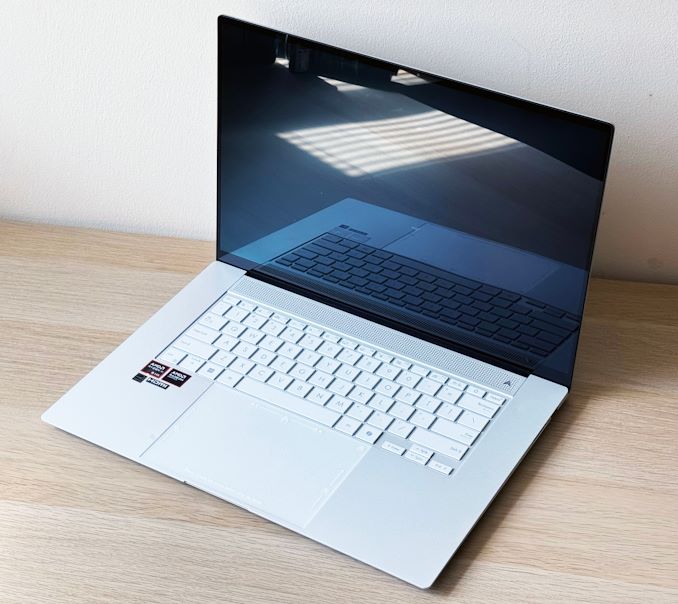
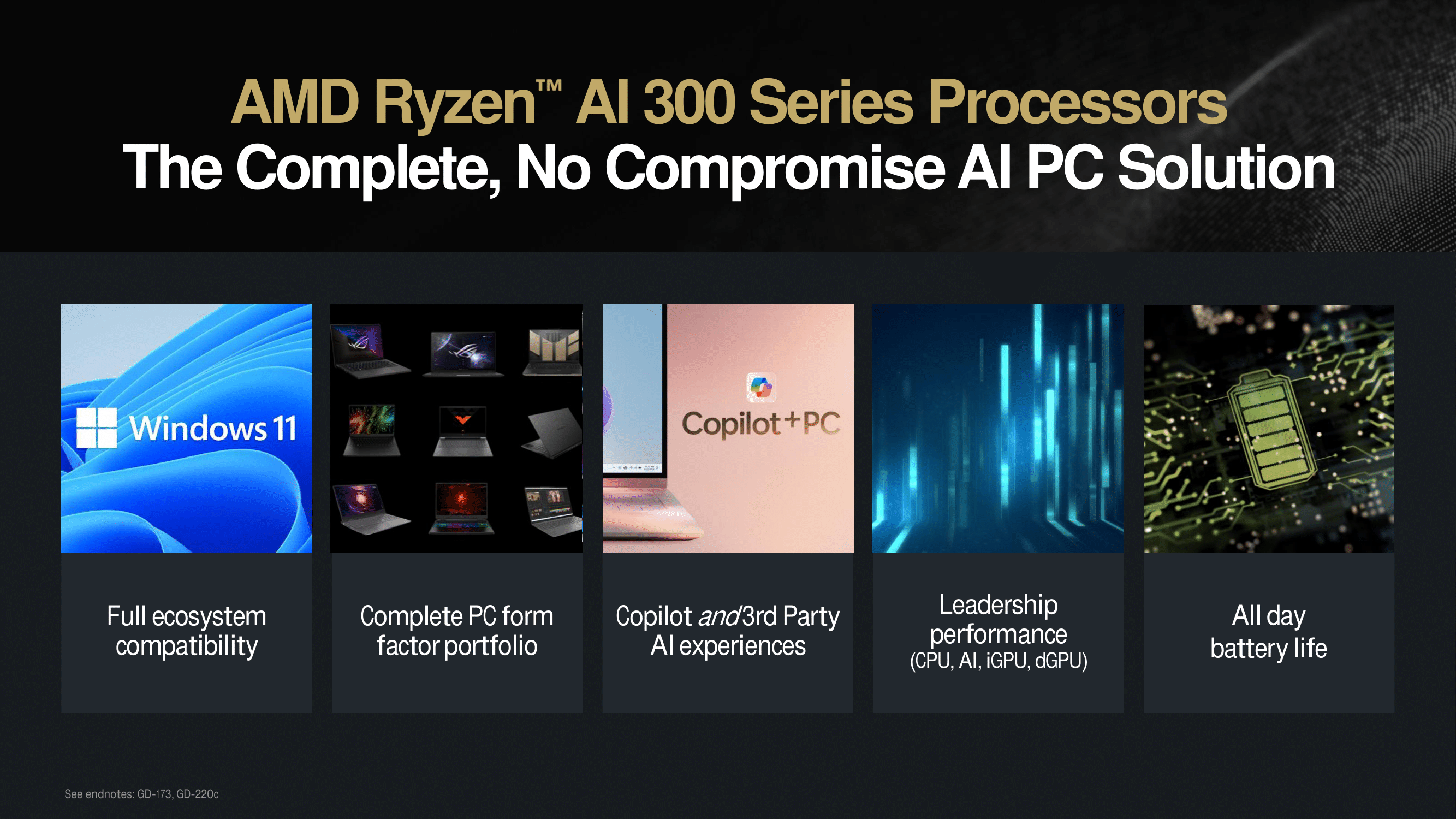
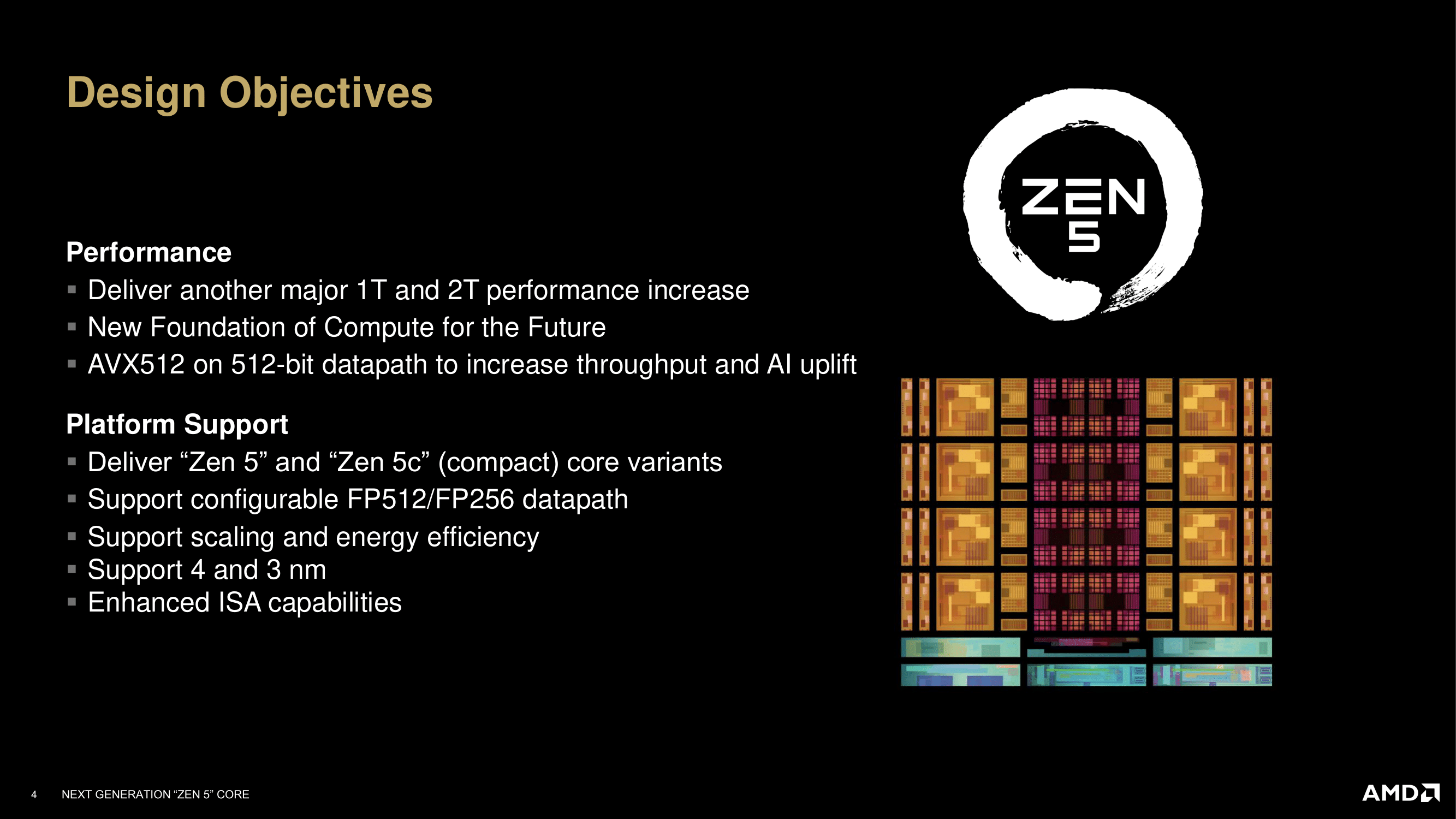
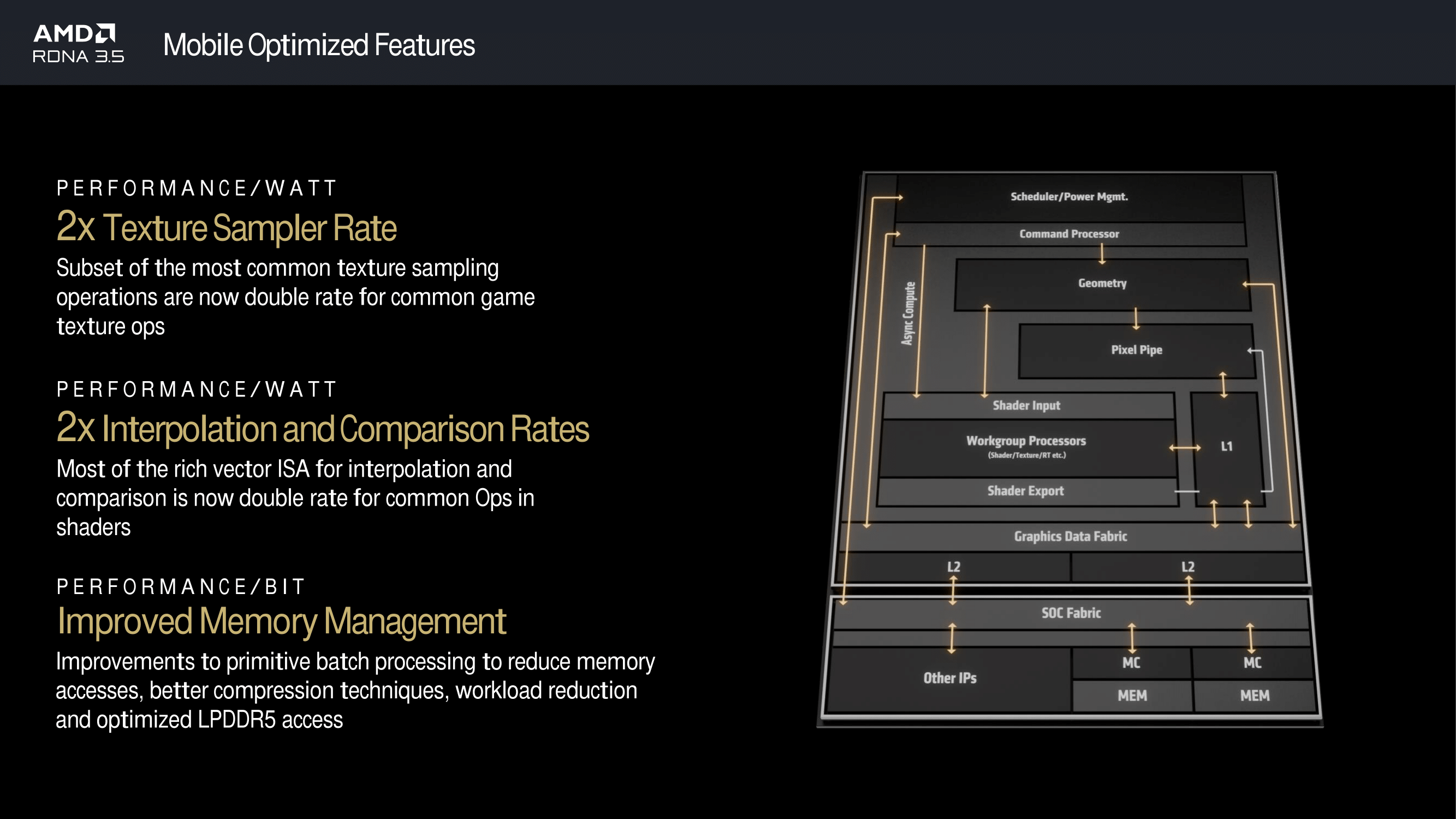
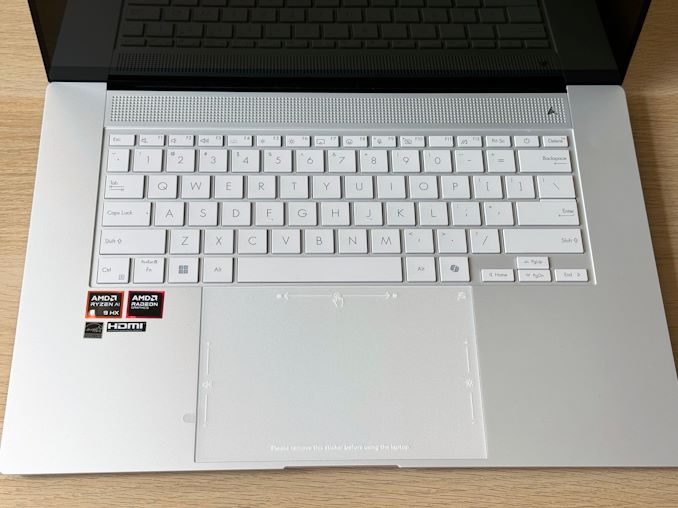

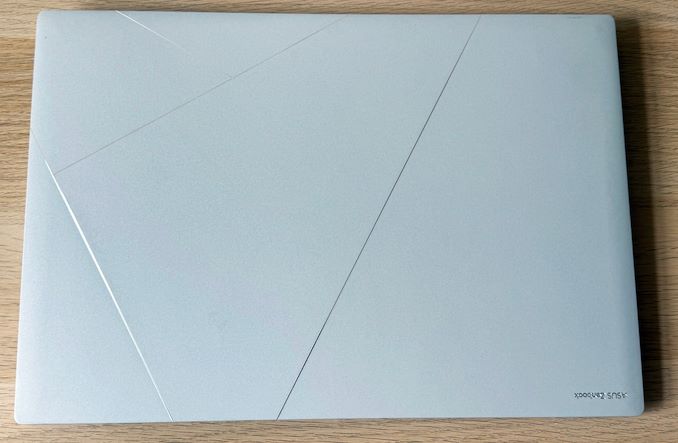








72 Comments
View All Comments
Dante Verizon - Sunday, July 28, 2024 - link
Why are you comparing an ultra-thin design to a CPU with PL2 at almost 90w? The notebookcheck tests show that the Zenbook runs up to 50% slower than the ProArt chassy.Ryan Smith - Sunday, July 28, 2024 - link
Sorry, which notebook are you referring to? We have multiple Zenbooks here.Terry_Craig - Sunday, July 28, 2024 - link
He's probably talking about the Zenbook in the review: https://www.notebookcheck.net/Asus-Zenbook-S-16-la...Strix performs much worse on the Zenbook than inside the ProArt, probably due to more aggressive power and temperature management.
Ryan Smith - Sunday, July 28, 2024 - link
It's definitely not a high performance chassis, despite being 16-inches. The default TDP is just 17 Watts; AMD asked reviewers to bump it up to 28W.But this is what AMD sent out for review. Given the wide range of laptop TDPs out there, these review unit laptops can never cover the full spectrum. So it's more a reflection of what power level/form factor the chipmaker is choosing to prioritize in this generation.
The Hardcard - Sunday, July 28, 2024 - link
What is the 90W laptop in this review? The other laptops are listed at 28W and 35W here. I did not see any indication of the power specifications of the ProArt on the other site, just some numbers provided. I strongly suspect that laptop is running at top TDP, 45-54W.So, like, a different comparison.
Terry_Craig - Sunday, July 28, 2024 - link
https://www.notebookcheck.net/AMD-Ryzen-9-7940HS-P...Depending on the model, the 7940HS goes up to 100w.
The Hardcard - Monday, July 29, 2024 - link
But, is the 7940HS pulling 100w in this review instead of the reported 35w? Otherwise,, what is the point of the complaint?https://www.ultrabookreview.com/69005-asus-proart-...
The HX 370 is in a different chassis pulling 80w sustained. Does that make the 35w vs 28w happening here more fair? I mean, if what the chips can draw elsewhere somehow matters here at all?
eastcoast_pete - Monday, July 29, 2024 - link
It matters if one wants to look at the maximum performance possible, regardless of power draw. But, in addition to what Ryan wrote, the attraction of the HX Series to me is the strong performance at lower power draws. I would have actually liked to see performance comparisons at 17 W, which IMHO is of special interest in such thin and light notebooks. The higher end (> 50 W) will be if interest for Strict Halo, which as far as I can tell is supposed to take on notebooks with smaller dGPUs.ET - Sunday, July 28, 2024 - link
From the benchmarks here, the 370 looks somewhat disappointing on the CPU front, with some losses to 8 cores Zen 4. A hybrid architecture is always a problem. I wonder if future scheduling changes will help or if the small 8MB L3 for the Zen 5c cores is a problem that can't be overcome.The new GPU however looks like a good upgrade over the previous gen.
nandnandnand - Sunday, July 28, 2024 - link
It's hybrid with different cache amounts, but it's also two CCXs instead of one after 3.5 generations of simple 8-cores. It's hard to say what's screwing it up.Phoronix's review was more positive for the CPU. The main benefit is power efficiency:
https://www.phoronix.com/review/amd-ryzen-ai-9-hx-...
The reviews I looked at didn't look too good for the GPU. Maybe it will do better with more power, but what it really needs is memory bandwidth. Hopefully AMD brings some Infinity Cache to its mainstream 128-bit APUs in the future.